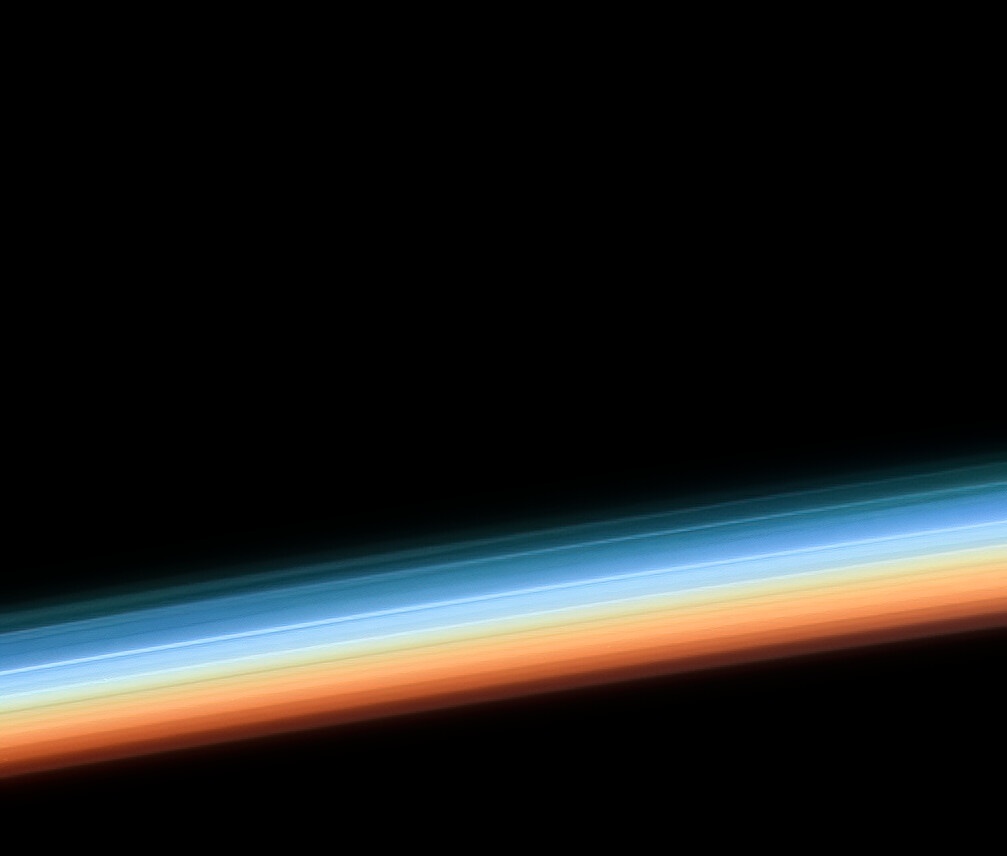Scientists have learned a lot about the atmospheres on various worlds in our Solar System simply from planetary sunrises or sunsets. Sunlight streaming through the haze of an atmosphere can be separated into its component colors to create spectra, just as prisms do with sunlight. From the spectra, astronomers can interpret the measurements of light to reveal the chemical makeup of an atmosphere.
At sunrises and sunsets, the Sun’s rays stream through a thicker layer of the atmosphere at an oblique angle, providing more details and data – and sometimes a burst of color from the scattering of light, called Rayleigh scattering.
Thanks to our spacecraft in orbit or on the surface of various worlds, we have a front row seat to observe a sunrise or sunset as if we were there ourselves — with the added benefit of on-board instruments that can see in wavelengths invisible to human eyes.
Daybreak or nightfall looks different on each planet as a result of how the sunlight interacts with the planet’s atmosphere. But there are similarities too. Take a look at our lead image, which is a Cassini spacecraft photo of the layers of Saturn’s upper atmosphere.
Were you fooled? It looks a lot like Earth’s atmosphere. The Cassini picture was processed by image editing guru Kevin Gill, and it caught our eye because of the similarities to an oft-seen image of the space shuttle backdropped by the layers of Earth’s atmosphere.
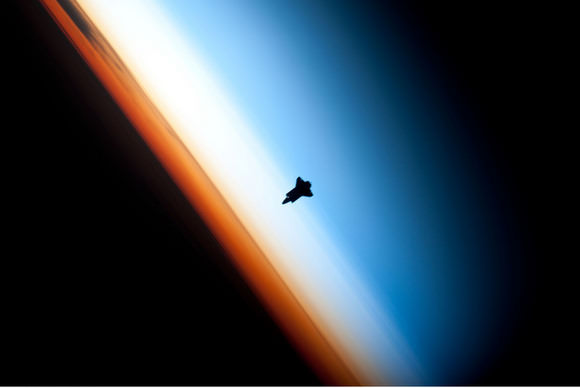
“That’s exactly the picture I was thinking about when I processed the Saturn image,” Gill said, adding that he has a caveat about the Saturn image. “I don’t have the highest confidence that I got the color and alignment 100% correct, and as it is a false color because it uses wavelengths ranging from the near-infrared (.938 microns) to ultraviolet (.338 microns). So I’m not sure this image is anything more than a pretty picture until it gets more scientific analysis and correction.”
But just like all images from space, such as from the Hubble Space Telescope, the colors are actually neither ‘true’ nor ‘false’ colors, but are representative of the physical processes underlying the subjects of the images. The processing done by image editors is the best way to represent in a single image as much information as possible that’s available in the data. (Read our article about the art of extraterrestrial photography.)
But Kevin’s image is a gorgeous look at the layers at the top of the ringed planet’s atmosphere, and it just “feels” like Saturn has at least some similarities and familiarizes with our own Earth. However, we know that like the rest of the planet, the atmosphere of Saturn is made up approximately 75% hydrogen and 25% helium, with trace amounts of other substances like water ice and methane.
Titan
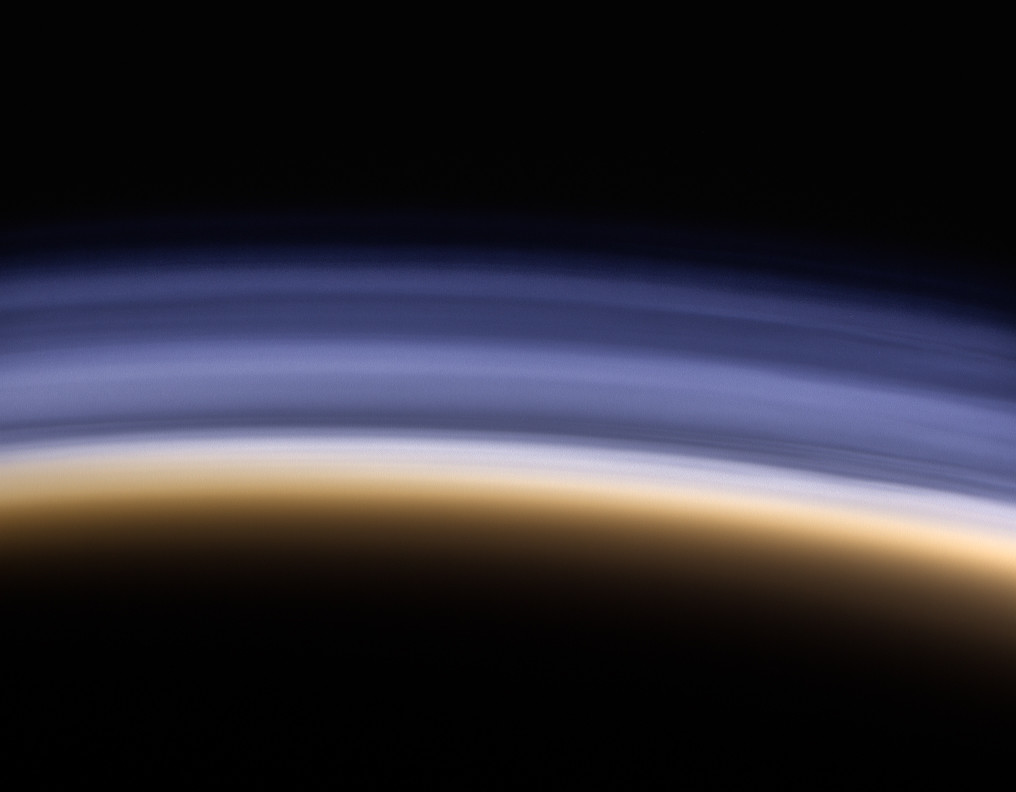
NASA/JPL-Caltech/SSI/CICLOPS/Kevin M. Gill
Saturn’s moon Titan is the only satellite in the solar system known to have a measurable atmosphere, and it consists of mostly nitrogen (about 95 percent) and methane (about 5 percent). High in Titan’s atmosphere, the methane and nitrogen molecules are split apart by the Sun’s ultraviolet light and by high-energy particles accelerated in Saturn’s magnetic field. Some of the compounds produced by that splitting creates a kind of smog—a thick, orange-colored haze that makes the moon’s surface difficult to view from space.
And until the Cassini-Huygens spacecraft arrived at the ringed planet in 2004, there was a bit of a mystery about Titan’s atmosphere.
Dr. Sarah Hörst, a planetary scientist at Johns Hopkins recently shared a story on Twitter, how in the early 1980s, observations from Earth revealed that carbon monoxide was discovered in Titan’s atmosphere. But until 2008, chemistry models couldn’t explain why.
“There were many different theories but nothing fit all the different pieces of evidence and constraints that existed,” Hörst explained. But it turns out, scientists were missing a key piece of information: Enceladus is shooting water into the Saturn system and some of it ends up in Titan’s atmosphere. The geysers on Enceladus weren’t discovered until 2005, so this fact couldn’t be included in the chemistry models of Titan because it wasn’t known.
“The less you know about an atmosphere, the harder it is to use a model to draw conclusions about it,” Hörst said, “and the more careful you have to be about how you use it.” (Which also might apply to the recent news of potential signs of life in Venus’ atmosphere).
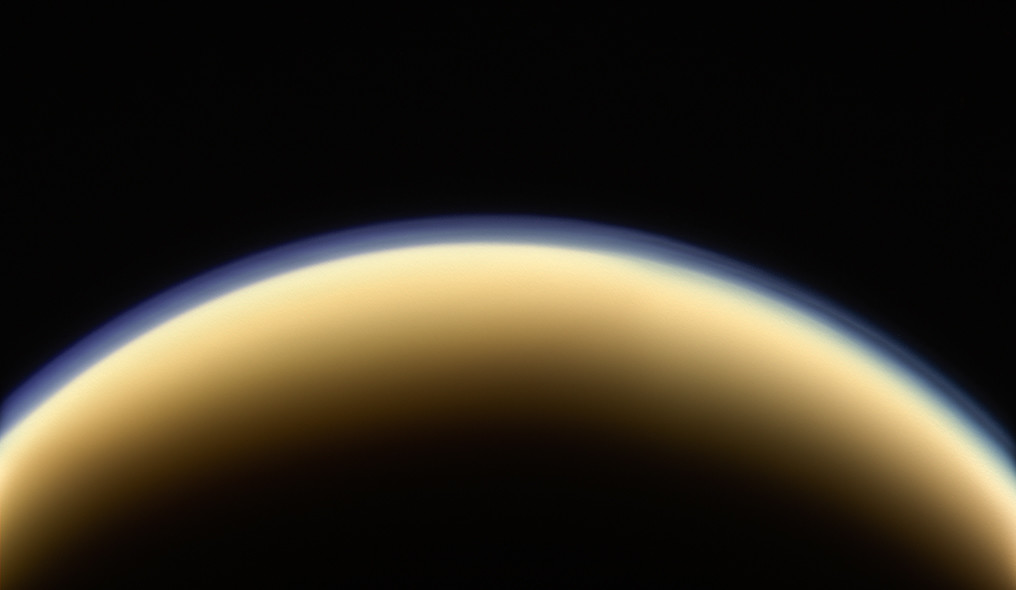
For more stunning images of Titan and its atmosphere, Kevin Gill has compiled a gallery of “coffee-stain” Titan images.
Venus
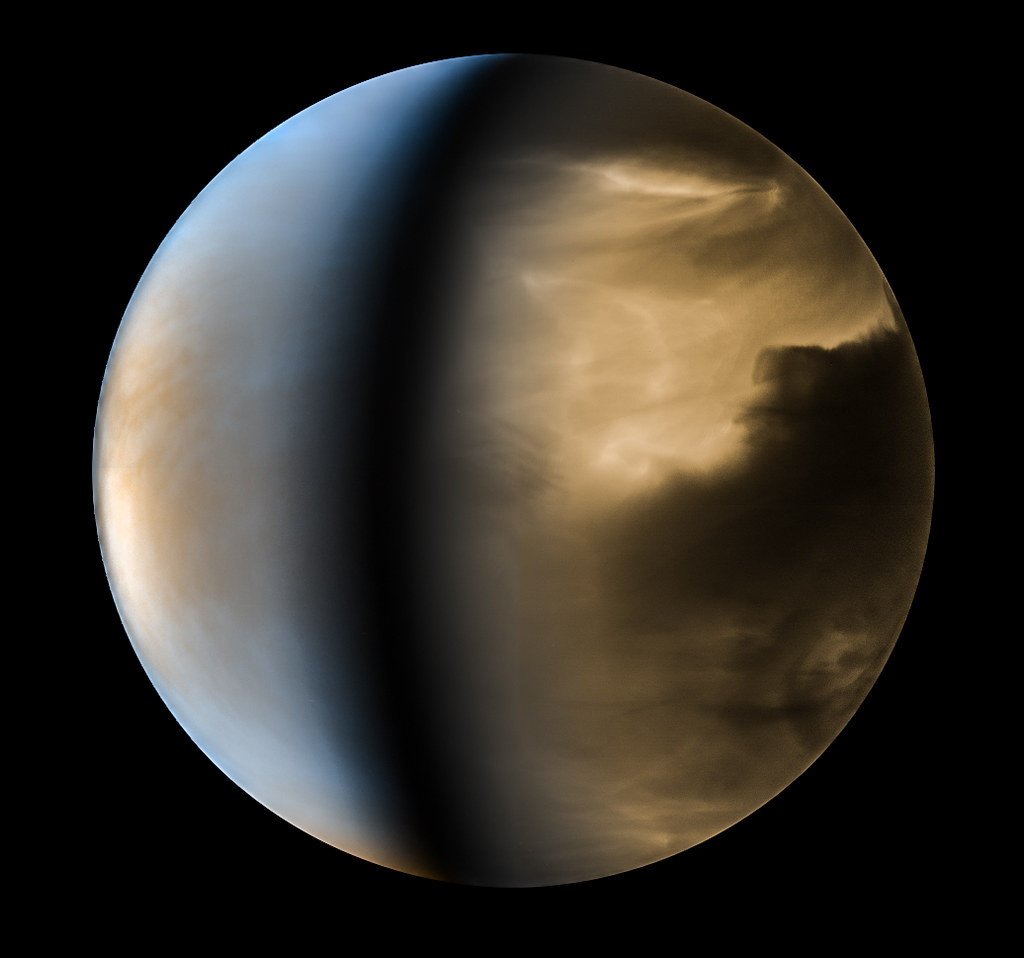
Speaking of Venus… this crazy world is covered with clouds that reflect and scatter sunlight, and so from space Venus can appear rather bright. But at the surface — from images taken by the Russian Venera landers that were able to endure the crushing atmosphere for a few minutes — we can ascertain the rocks are different shades of grey, much like rocks on Earth. But the thick atmosphere filters the sunlight so that everything would look orange. The Sun itself would likely look like a light-colored spot in the murky sky.

Venus’ atmosphere consists mainly of carbon dioxide, with clouds of sulfuric acid droplets. The thick atmosphere traps the Sun’s heat, resulting in surface temperatures higher than 880 degrees Fahrenheit (470 degrees Celsius). The atmosphere has many layers with different temperatures. At the level where the clouds are, about 30 miles (50 km) up from the surface, it’s about the same temperature as on the surface of the Earth, and that’s where the phosophine was discovered.
Mars
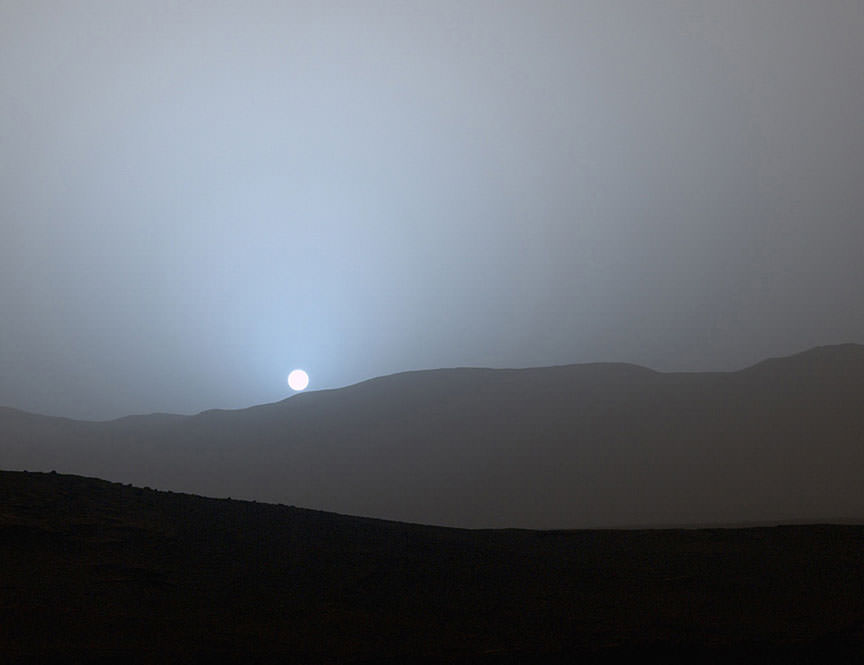
The rovers and landers on Mars’ surface have taken several images of sunsets on the Red Planet. Since Mars is farther from Sun than Earth, the Sun appears only about two-thirds the size that we are used to seeing on our planet. The sunset on Mars turns from a brownish color to a blueish hue as a result of the dust in the Martian atmosphere that scatters the blue color more effectively.
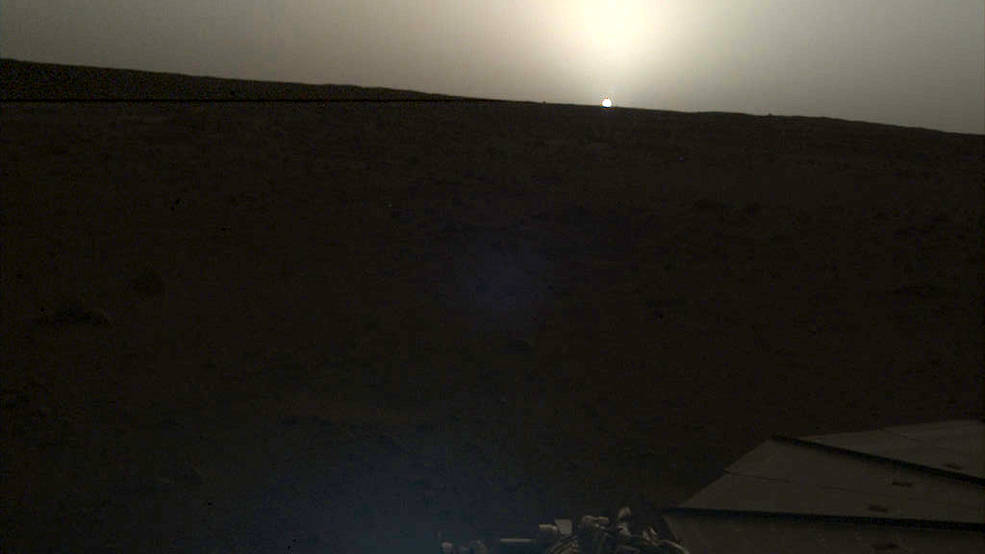
Credits: NASA/JPL-Caltech
Pluto
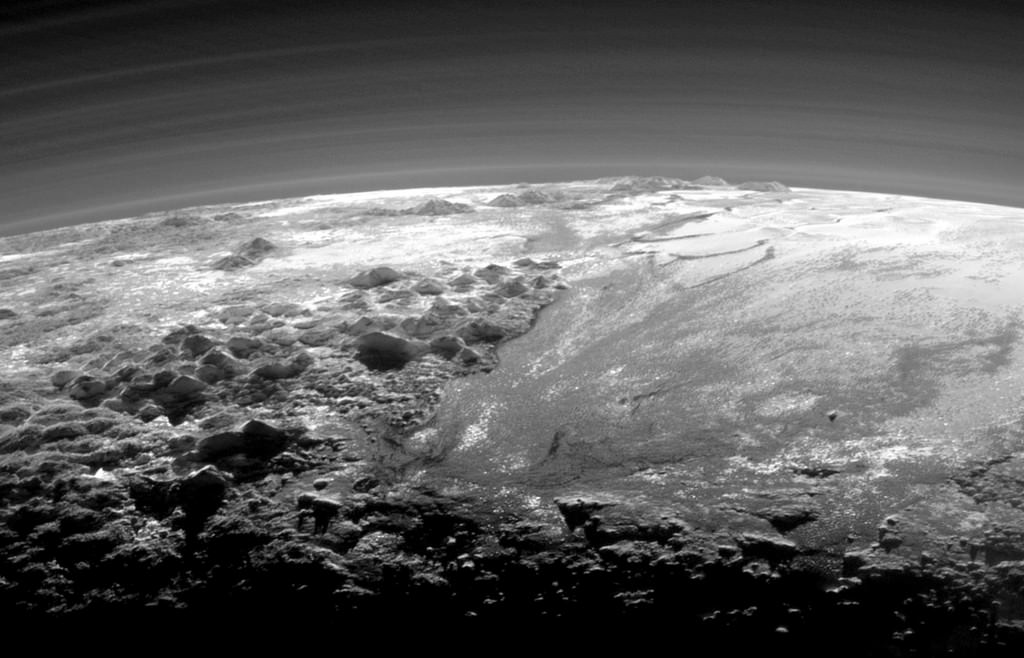
Yes, Pluto has an atmosphere too, which was highlighted by the New Horizons spacecraft. Just 15 minutes after its closest approach to Pluto on July 14, 2015, New Horizons looked back toward the Sun and captured this near-sunset view of the rugged, icy mountains and flat ice plains extending to Pluto’s horizon. The backlighting highlights more than a dozen layers of haze in Pluto’s tenuous but distended atmosphere. Scientists weren’t expecting to see this type of detail, but the sunlight streaming through the atmosphere made it possible.
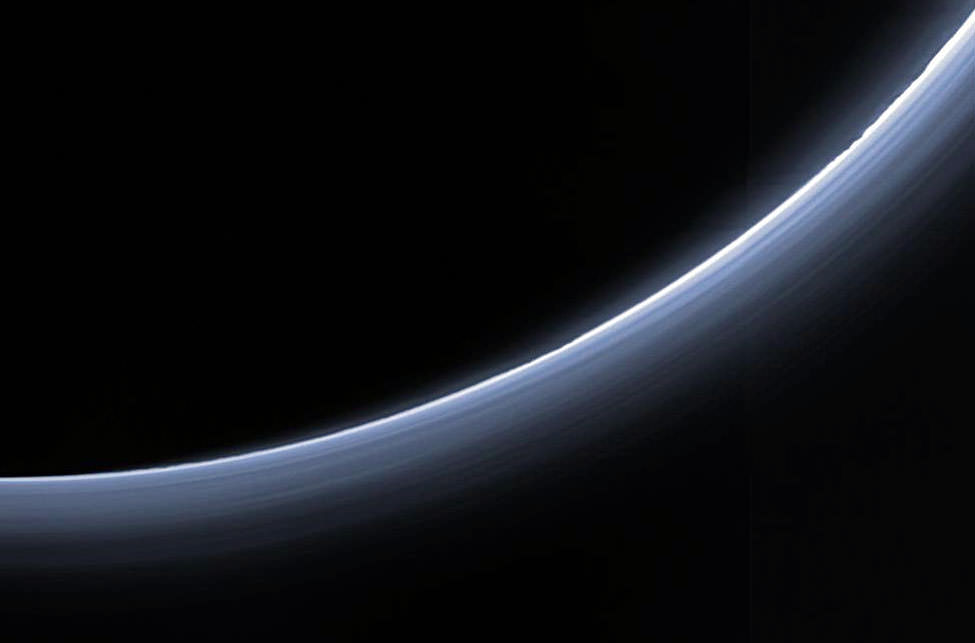
Another view from New Horizons shows the dwarf planet’s blue hazes shining against the blackness of space. According to NASA, the photo was processed to closely resemble the colors a person would see if looking at Pluto from that same angle. Scientists say that if you were to stand on Pluto during sunrise and sunset, you would probably see a blue sunrise or sunset from the surface.
To see more views of sunsets on other worlds in our solar system, watch this fun video created by Geronimo Villanueva, a planetary scientist from NASA’s Goddard Space Flight Center. He created this “sunset simulator” while building a computer modeling tool for a possible future mission to Uranus. Read more about it here.
For more planetary views, Kevin Gill has a full gallery of planetary crescents
Lead image caption: Saturn’s upper atmosphere. Processed using calibrated narrow-angle near-infrared (CB3) and ultraviolet (UV3) and wide-angle red, green, and violet filtered images of Saturn taken by Cassini on November 17 2007. NASA/JPL-Caltech/SSI/CICLOPS/Kevin M. Gill.

